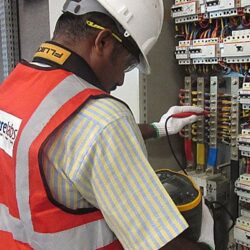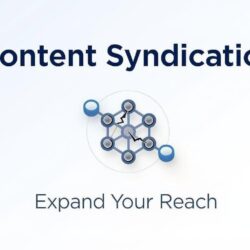Why Healthcare Providers Are Switching to AI Medical Scribes Like Scribe Medix
A quiet revolution is underway in clinics and hospitals across the country. A growing wave of healthcare providers from solo practitioners to large health systems are making a decisive shift away from traditional documentation methods. They are turning to a powerful technological solution: the AI medical scribe. At the forefront of this movement is Scribe Medix, a platform that is redefining clinical workflows and addressing the core pain points of modern medicine.
But what is driving this mass migration? Why are time-pressed physicians and cost-conscious administrators investing in this new technology? The shift isn’t just about adopting a new tool; it’s about embracing a sustainable future for healthcare. This article explores the powerful, tangible reasons behind the switch and why Scribe Medix has become the platform of choice for so many.
The Breaking Point: The Unsustainable Status Quo
To understand the switch, one must first appreciate the immense pressure on today’s healthcare providers. The traditional model, reliant on manual data entry into complex Electronic Health Records (EHRs), has created a cascade of problems:
- Epidemic of Burnout: Over 50% of physicians report symptoms of burnout, with administrative tasks and EHR documentation cited as the number one cause.
- Financial Strain: The cost of employing human medical scribes, while helpful, is significant and includes salaries, benefits, and training. Furthermore, physician burnout leads to staggering turnover costs, estimated at millions for a single hospital.
- Compromised Patient Care: The “note-and-type” dynamic forces doctors to divide their attention, leading to poor patient rapport and potentially missing critical clinical cues.
This untenable situation has created a powerful demand for a better way forward.
The Tipping Point: 5 Reasons Providers Are Choosing AI
The switch to AI medical scribes is a strategic decision driven by clear and compelling advantages. Here are the top five reasons driving this industry-wide adoption.
- To Combat Burnout and Restore Joy to Practice
This is the most personal and powerful reason for the switch. Scribe Medix directly attacks the root cause of burnout by eliminating the single most time-consuming task: charting.
- The Impact: Providers report a dramatic reduction in after-hours work, allowing them to leave the clinic on time and reconnect with their lives outside of medicine. By lifting the administrative burden, Scribe Medix helps physicians rediscover the passion for patient care that drew them to medicine in the first place.
- To Achieve a Significant Return on Investment (ROI)
From a financial perspective, the switch is a clear win. While there is an investment in the technology, the ROI is multi-faceted and substantial.
- Cost Savings vs. Human Scribes: Scribe Medix operates on a predictable subscription model, eliminating the variable and recurring costs of a human employee (salary, benefits, turnover).
- Retention Savings: The cost of replacing a single physician can exceed $500,000. By reducing burnout, Scribe Medix directly contributes to higher physician retention, saving organizations immense recruitment and training costs.
- Efficiency Gains: More efficient documentation means the potential to see more patients or dedicate more time to complex cases, directly boosting practice revenue.
- To Enhance the Patient Experience
In an era of consumer-driven healthcare, patient satisfaction is paramount. AI scribes like Scribe Medix create a superior clinical encounter.
- Undivided Attention: With the note-taking handled ambiently, the provider can maintain eye contact, practice active listening, and engage in a genuine conversation. Patients feel heard, valued, and build stronger trust in their physician.
- To Ensure Accuracy and Comprehensive Documentation
Contrary to some assumptions, AI scribes often produce more accurate and structured notes than their human counterparts.
- Clinical Context Understanding: Scribe Medix uses advanced NLP to understand medical terminology and context, accurately distinguishing between sound-alike terms and populating the correct sections of a SOAP note.
- Consistency and Completeness: The AI does not get tired or distracted. It ensures that every note is thorough, structured, and compliant, which supports better clinical decision-making and optimized billing.
- For Unmatched Scalability and Reliability
Human scribes are a limited resource. AI is infinitely scalable.
- Scale on Demand: A practice can equip all its providers with Scribe Medix simultaneously without a lengthy hiring process. It works equally well for in-person visits and telehealth appointments.
- 100% Availability: The platform doesn’t call in sick, take a vacation, or resign. It provides reliable, high-quality documentation support day in and day out, ensuring workflow consistency.
Why Scribe Medix? The Differentiators Driving Choice
While the category of AI scribes is growing, providers are choosing Scribe Medix for specific, standout reasons:
- Seamless EHR Integration: Scribe Medix is designed to work within existing clinical workflows, drafting notes directly into the provider’s preferred EHR with minimal disruption.
- Focus on Specialty-Specific Medicine: The platform is trained to understand the unique nuances and terminology of various medical specialties, from cardiology to psychiatry.
- Proactive, Not Just Passive: Scribe Medix is evolving into a clinical partner, with the potential to highlight gaps in documentation or suggest relevant coding, adding another layer of intelligence to the practice.
Conclusion: The Switch is More Than an Upgrade It’s a Necessity
The healthcare industry is at a crossroads. Continuing with the status quo means accepting high burnout rates, rising costs, and a degraded patient experience. Switching to an AI medical scribe like Scribe Medix represents a proactive, intelligent path forward.
This movement is not about replacing human expertise; it’s about empowering it. By automating the administrative burden, Scribe Medix allows healthcare providers to focus their irreplaceable skills where they are needed most: on diagnosing, healing, and building relationships with their patients. The question for forward-thinking practices is no longer if they should switch, but how quickly they can implement a solution like Scribe Medix to secure their future.
Frequently Asked Questions (FAQs)
Q1: Is the transition from a human scribe to Scribe Medix difficult? Not at all. The transition is typically very smooth. Scribe Medix requires no complex training and integrates directly into your existing EHR. Most providers find they adapt to the new workflow within a few days, appreciating the immediate reduction in their administrative load.
Q2: How does data security with Scribe Medix compare to a human scribe? It’s significantly more secure. Scribe Medix operates under strict HIPAA-compliant protocols with end-to-end encryption. Unlike a human employee who may discuss patient information, the AI processes data algorithmically without human listeners, minimizing privacy risks.
Q3: Can Scribe Medix handle fast-paced, complex patient encounters? Yes. The AI is built to process natural, rapid conversation and filter out irrelevant dialogue. Its strength lies in identifying and structuring clinically relevant information, even from complex medical discussions, often with greater accuracy and speed than a human under pressure.
Q4: What if I need to make corrections to the note? The physician is always in control. Scribe Medix generates a comprehensive draft note that is sent to you for review. You can easily make any necessary edits, additions, or corrections before signing it, ensuring the final record is perfectly accurate.
Q5: We have both young and older physicians on our team. Is Scribe Medix easy for everyone to use? Absolutely. The beauty of an ambient AI scribe like Scribe Medix is its simplicity. There are no complex commands to learn. It works by simply listening to the natural patient-provider conversation. This makes it incredibly easy to adopt for providers of all ages and technical comfort levels.




